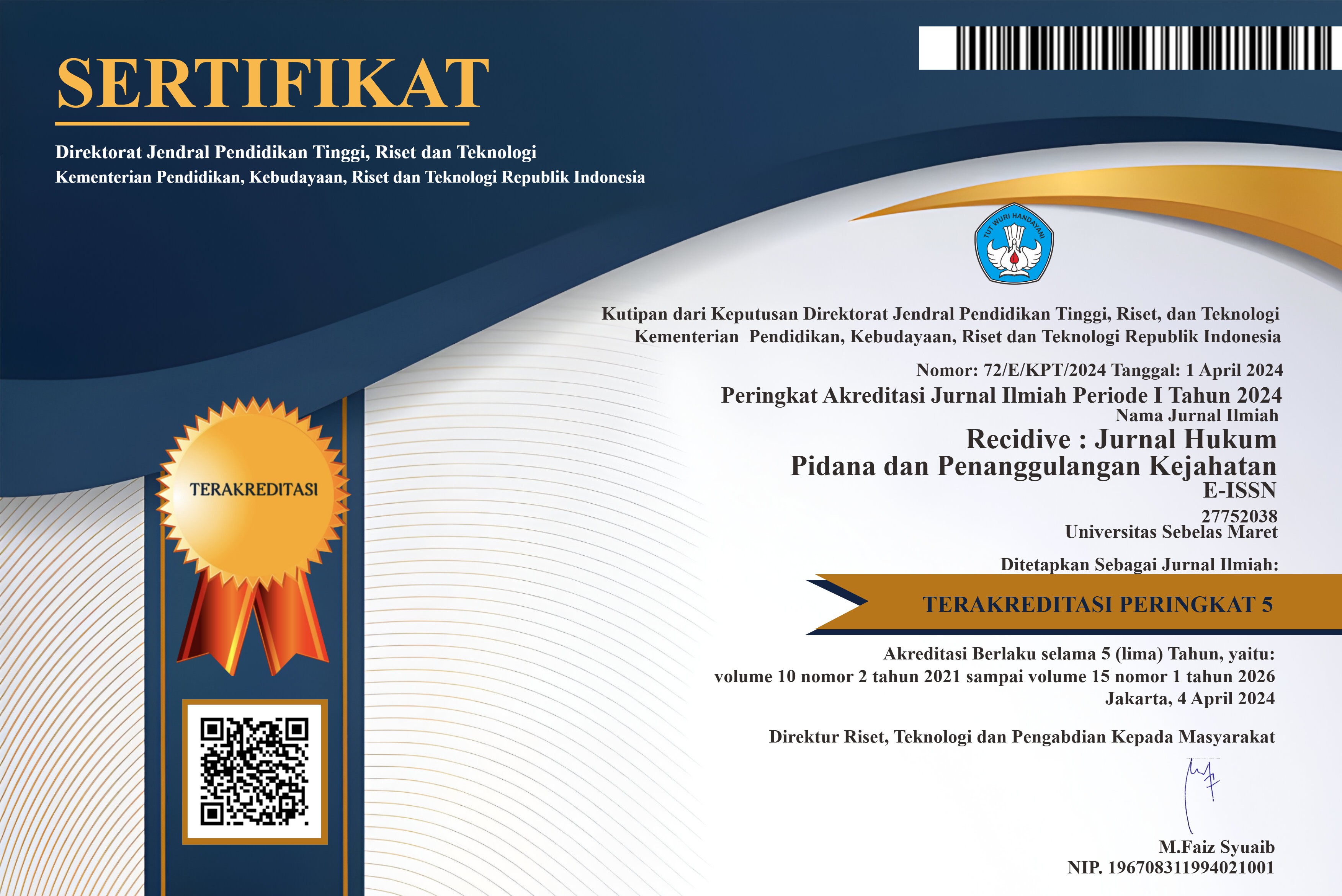REGULASI PENYIMPANGAN ARTIFICIAL INTELLIGENCE PADA TINDAK PIDANA MALWARE BERDASARKAN UNDANG-UDANG REPUBLIK INDONESIA NOMOR 19 TAHUN 2016
Abstract
Abstrak
Penelitian ini bertujuan untuk mengetahui pengaturan pidana penerapan artificial intelligence pada tindak pidana malware berdasarkan Undang-Undang nomor 19 tahun 2016 tentang perubahan atas Undang-Undang nomor 11 tahun 2008 tentang Informasi dan Transaksi Elektronik. Penelitian ini termasuk jenis penelitian hukum normatif yang bersifat preskriptif dengan pendekatan undang-undang (statue approach) dan pendekatan konseptual (conseptual approach). Penelitian menggunakan bahan hukum primer, sekunder dan bahan non hukum yang berkaitan. Perkembangan teknologi telah merubah kehidupan masyarakat, akibat perkembangan tersebut dunia menambah dimensi kehidupan yang mana hal itu selaras dengan berkembangnya kejahatan teknologi. Dalam penelitian ini menghasilkan bahwa penerapan AI dalam tindak pidana malware merupakan kategori computer-related crime karena pemanfaatan komputer dan teknologi AI sebagai alat bantu dalam melakukan kejahatan. Aturan-aturan pidana yang dapat menjerat perbuatan tersebut adalah KUHP, UU Hak Cipta, UU TPPU, UU Transfer Dana, UU Dokumen Perusahaan, Permenkominfo no 20 tahun 2016 dan UU Terorisme. Namun UU ITE sebagai lex specialis dan lex posterior merupakan hukum positif yang paling tepat dalam menjerat tindak pidana tersebut meskipun terdapat kelemahan bahwa tidak disebutkan secara eksplisit pengaturan mengenai malware dan AI.
Kata Kunci : Malware; Artificial Intelligence/Kecerdasan Buatan; Cyber Crime; UU ITE.
Abstract
This study aims to determine the criminal regulation for the application of artificial intelligence in criminal acts of malware based on criminal law in Indonesia, especially in Law number 19 of 2016 concerning amendments to Law number 11 of 2008 concerning Information and Electronic Transactions. This research is a type of normative legal research that is prescriptive in nature with the law approach (statue approach) and conceptual approach (conceptual approach). The study uses primary, secondary and related non-legal material. Technological developments have changed people’s lives, as a result of these developments the world added a dimension of life which was in harmony with the development of technological crime. The results showed that the application of AI in malware criminal acts is a category of computer-related crime due to the use of computers and AI technology as a tool in committing crimes. Criminal rules that can ensnare such acts are the Criminal Code, the Copyright Act, the TPPU Law, the Fund Transfer Act, the Company Document Law, the Ministry of Communication and Information No. 20 of 2016 and the Terrorism Law. However, the ITE Law as lex specialis and lex posterior is the most positive positive law in ensnaring these crimes despite the weakness that there is no explicit mention of the regulation regarding malware and AI.
Keywords : Malware; Artifical Intelligence; Cyber Crime; ITE Law.
Full Text:
PDFRefbacks
- There are currently no refbacks.




.jpg)





